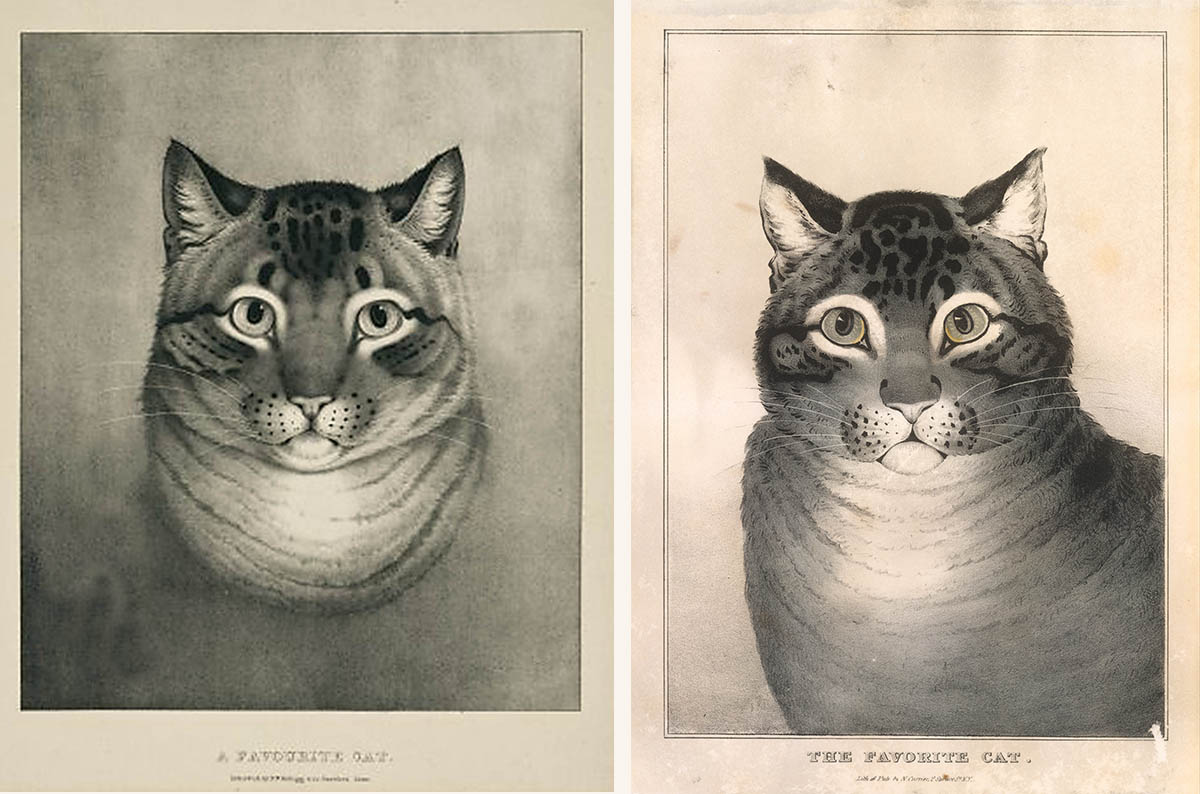 As summer is drawing to a close, this will be our final Summer Pleasures for 2017. These shorter blogs were designed to intrude as little as possible on your beach reading and I hope that you have enjoyed them.
As summer is drawing to a close, this will be our final Summer Pleasures for 2017. These shorter blogs were designed to intrude as little as possible on your beach reading and I hope that you have enjoyed them.
As we get back into the swing of things, once again all readers are invited to submit ideas for blogs. Perhaps you would just like to see a theme developed, perhaps you would like to author one yourself.
We have enjoyed the diversity of voices.
guest post by Brian Liddy
Until recently I laboured under the impression that I was working on a serious web-based project dedicated to the work of the early British photographer, W H F Talbot. So why did I catch myself looking at thousands of pictures of cats and kittens on the internet? The answer, of course, is that Henry made me do it.
Recently I called in on Francesca Issatt at Oxford’s History of Art Visual Resource Centre with vaguely defined plan to find out if their resources might aid in identifying the wealth of artworks Talbot photographed. Some of the myriad paintings, etchings, engravings and drawings Talbot reproduced photographically have been identified but intriguingly, for every artwork where we know the name of the artist, title, date and medium, there are many more where we don’t. One way out of this wilderness is when we resort to a descriptive title and hope that some reader will recognise the work and educate us via the ‘Contribute to this record’ button.
One of our Research Affiliates, Allie Gressler, is working on identifying these mysterious artworks and is already producing results. But I can’t resist occasionally dipping my toe in when I have a feeling I might be able to trace an original. With my sandwich and keyboard in hand, watching out for crumbs, I turn to the web seeking images that match an etching Talbot either used in place of a photographic negative, or copied in camera.
Francesca is charged with the Art History Department’s picture library and repository of reference photographs of works of art. In past years, students and faculty members sought slides for their lectures or photographic prints for their publications, although now it is evolving in response to the web with one particular strength being its cross-referenced system. I showed Francesca one of the Talbot photographs that for some reason I was really keen to identify, a portrait of an unidentified cat. She pointed me to the ‘animal’ section of the index cards where I was alerted to a myriad of compositions with titles like, “Woman holding a cat”, or “Child playing with a cat”. But unsurprisingly there was no “Unidentified Cat Head.”
Not to be defeated, Francesca forwarded our cat to her network of colleagues. Imagine my surprise at the email response from a V&A print curator containing the immortal words, “I think I might have got the pussycat”:
Almost identical, but not quite, for the ears betray the difference. Some markings in the fur are different and the highlights in the eyes vary, but the two are so close they have to be related. Armed with this fresh lead, I went back online but little did I realise what I was letting myself in for. We also now know how the Victorians managed to survive without cute cat pics on the internet – they had the lithographs of Currier & Ives, and it seems that even our esteemed Talbot was not immune to their charm.
Up until now I’ve done quite well in avoiding websites dedicated to cute photographs of animals – it’s just not my thing and, sorry, they leave me untouched. Searching for variant lithographs of mousers soon reminded me of Sir Tim Berners-Lee famous comment about the profusion of felines on the Web.
I dragged Larry into this (I can reveal that he is a cat person and considers Herschel, his Russian Wolfhound, as really just an honorary cat). Larry spotted something that until then had passed me by. Just below the cat’s neck there is a tantalising inscription. Neither of us could make it out at first, but once again the Talbot website’s ‘Image viewer’ came in useful. Returning to the Master Record for Schaaf 447, I found that the negative is more distinct than the prints and that by loading it into the Image Viewer I was able to zoom in on the lettering
and subsequent digital manipulation produced a usable positive signature:

Although J. M. Burbank widely exhibited paintings of animals in the 1830s, his or her identity has so far been shielded from the Web and this particular rendition of the favourite cat remains equally elusive.
 Please, please find it and spare me from more cute cat pictures.
Please, please find it and spare me from more cute cat pictures.
At least we now have the name of the artist and some close variant lithographs, instantly improving the records on the Talbot website. To see for yourself, carry out a web image search of ‘A Favourite Cat’ (and, of course, ‘A Favorite Cat’), filter out the personal posts and cat selfies, and there you see all sorts of variants. Then try to imagine a Web devoid of photography and thank Henry for starting off the whole enterprise.
Brian Liddy
• Questions or Comments? Please contact digitalsupport@bodleian.ox.ac.uk • WHFT, Copy of a print, study of a cat’s head, negative and digital print, National Science and Media Museum, Bradford, 1937-1044; Schaaf 447. • Artist unknown, A Favourite Cat, lithograph by D. W. Kellogg & Co., 1830-1842, Wadsworth Athenaeum Museum of Art, Connecticut, 1925.941; lithograph by Nathaniel Currier, 1838-1846, Metropolitan Museum of Art, New York, 63.550.259. • There are seven known examples of our study of a cat’s head. Three of these are negatives, two of which are waxed, but all the known prints are from one of these. Six of the negatives and prints are at Bradford and one negative is in the British Library.




